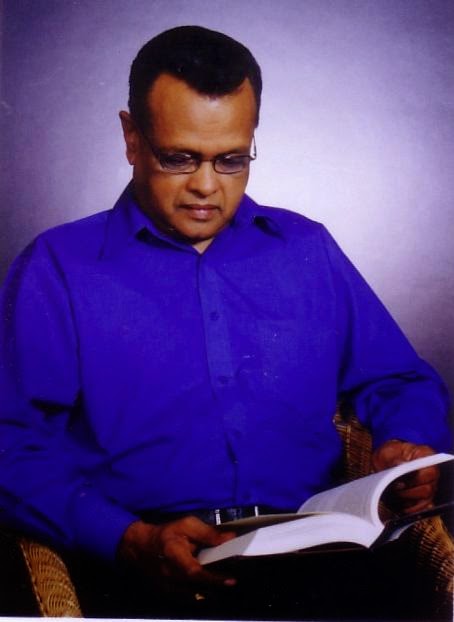Government by Greed - PART 6: Key Support
for the 1987 Coup
By Guest Writer, Subhash Appana
A political
coup-de-tat is no small undertaking by any standards. It involves treason as by
its very definition it attempts to overthrow a “legitimate” government by
extra-legal means. In fact, force and violence are necessary complements of any
coup-de-tat. And in order to “build” the scenario to justify a coup, an
orchestrated process is activated. The aim is to create a situation that allows
a treasonous, yet quietly-supported, coup-maker to say “there was no other
way”.
 |
| SITIVENI RABUKA - The Father of All Coups on 14 May, 1987 |
Within this
framework of politics, the obvious Indian “threat” acted as a diversion that
temporarily covered ominously developing undercurrents that were to plague
ethnic-Fijian politics and the country in later years. The Taukei Marches of
1987 allowed many of these undercurrents to surface and join the general wave
of dissatisfaction, resentment and rage that swept the main centres of the
country. Even in these marches, individual grievances and aspirations remained
quietly submerged as the convenient rhetoric of “Indian threat” was enough to
rally key support.
Many have pointed
fingers at the chiefs, and especially Ratu Sir Kamisese Mara and Ratu Sir
Penaia Ganilau who was Governor General at that time. Many have rubbished Ratu
Mara’s explanation when he said, “How could I stand by and watch my house on
fire?” This statement has generally escaped objective scrutiny as the tendency
had been to expect Mara to stop the 1987 coup or take an openly opposed stance
after the fact. He did neither because he was a thinking man who could probably
“see” things that couldn’t be openly articulated at the time.
The point is that as a chief, Ratu Mara
could not stand back and watch his country and his people get destroyed. It was
the same for Ratu Penaia who was not only Ratu Mara’s close political ally, but
also Ratu Mara’s brother-in-law through the marriage of his son, Ratu Epeli
Ganilau to Ratu Mara’s daughter, Adi Ateca Ganilau. More interestingly, Ratu
Penaia was also Ratu Mara’s superior as Tui Cakau and head of the Tovata
confederacy, within which Ratu Mara’s Lau province fell.
 |
| RATU SIR KAMISESES MARA: Perfect marriage connection in Fiji meant that he had relatives in top hierarchy in all three Confederacies in Fiji |
In addition to the above chiefly links,
any analysis on chiefly support for the 1987 coup cannot ignore the fact that
the first rationale for that coup involved removal of the Indian threat from
the political equation of Fiji. From this perspective the chiefs were
duty-bound to support that coup because it was seen as a necessity. Opposition
could not have been justified in any way and once the rebellion gained
momentum, there was simply no room for diplomatic chiefly intervention.
The second important
point of support for that coup had to come from the Fiji military. In 1987, the
RFMF was a largely foreign peace keeping-focused entity. Since 1978 when troops
were deployed to UNIFIL in Lebanon, the size and skills of the RFMF had
expanded significantly. And the bulk of troop recruitment involved rural Fijian
youths who had virtually no real exposure to the “Indian threat” that they had
always heard of – they had no opportunity to see Indians in any other way.
The final card had
to do with foreign reaction to an unthinkable act of treason in the Pacific.
There was little arguing that this variable had to be factored in because Fiji
would not have accepted a reduced international status at that juncture –
unlike the stance taken now by Commodore Bainimarama. When David Lange tested
the ANZUS alliance by closing NZ ports to US nuclear vessels in 1985, Fiji’s
strategic importance had reached a new high.
Thus US geopolitical
concerns within the framework of the ever-heating Cold War provided the foreign
lifeline that the coup plotters needed. And even though foreign complicity was
a little more subtle and complicated to pinpoint, noted CIA operative Vernon
Walters was in Fiji and did meet Rabuka 2 weeks before the coup. He was later
providentially posted as US Ambassador to the UN and played a pivotal role in
minimizing subsequent international condemnation of the Rabuka Coups. And US
involvement did continue sporadically until the 1997 constitution brought back
normality to the country – was this a case of belated conscience and regret?
The 1987 coup thus
had key support from the chiefs, military, sections of the Fijian community and
the US. It was supposed to provide a transitory point to a new model of
governance for Fiji. Why then did Fiji have to wait 10 years before the 1997
constitution was finally enacted?
Stay tuned
for Future articles: Government by Greed
- Coup at Last -: A Coup Gone Wrong -: An Intense Power Struggle -: Spawn of
the 1987 Coup -: The Personal Tug-of-War. To come later.
[About
the Author: Subhash Appana is an
Indo-Fijian academic with Fijian family links. He was brought up in the chiefly village of
Vuna in Taveuni and is particularly fond of the Fijian language and culture.
Subhash has written extensively on the link between the politics of the vanua,
Indo-Fijian aspirations and the continued search for a functioning democracy in
Fiji. This series attempts to be both informative and provocative keeping in
mind the delicate, distractive and often destructive sensitivities involved in
cross-cultural discourses of this type.]





















